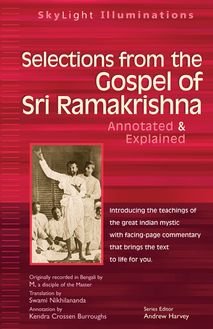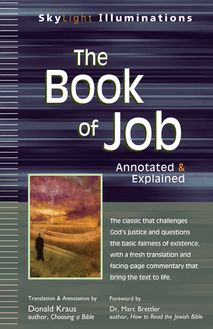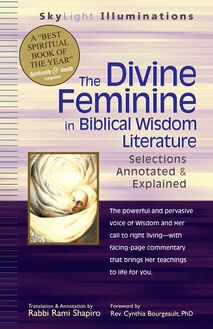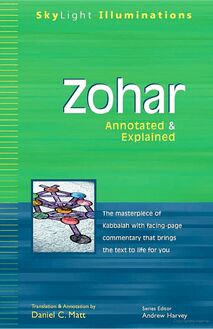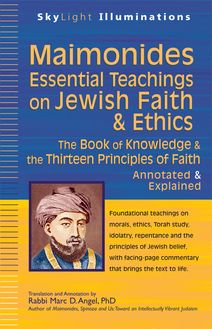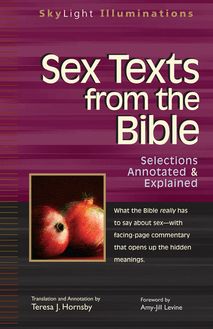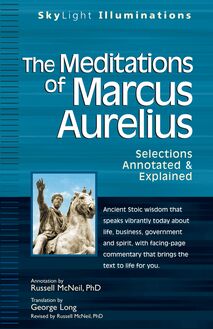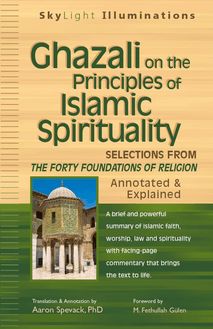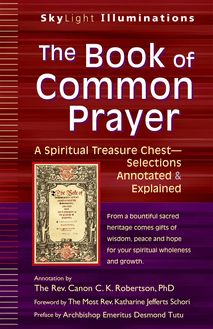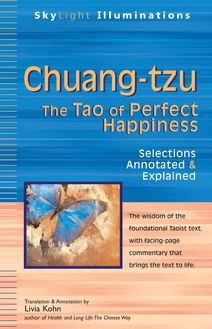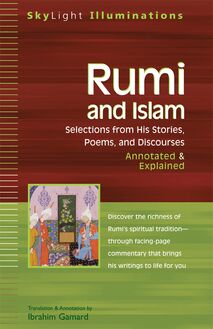Dhammapada , livre ebook
95
pages
English
Ebooks
2011
Vous pourrez modifier la taille du texte de cet ouvrage
Obtenez un accès à la bibliothèque pour le consulter en ligne En savoir plus
Découvre YouScribe en t'inscrivant gratuitement
Découvre YouScribe en t'inscrivant gratuitement
95
pages
English
Ebooks
2011
Vous pourrez modifier la taille du texte de cet ouvrage
Obtenez un accès à la bibliothèque pour le consulter en ligne En savoir plus
Publié par
Date de parution
02 mai 2011
Nombre de lectures
0
EAN13
9781594733369
Langue
English
Ancient words of the Buddha ("awakened one") that can become a companion for your own spiritual journey.
The Dhammapada ("Path of the Buddha's Teachings") is a daily inspiration for millions of Buddhists all over the world and for people of all spiritual traditions who have been impressed by its beauty and power. These words—believed to have been spoken by the Buddha himself over 2,500 years ago—contain most of Buddhism's central teachings.
Originally composed in the ancient language of Pali, this timeless text concisely and inspirationally portrays the route a person travels as he or she advances toward enlightenment. With poetic sequence and rhythm, the Dhammapadadescribes the fundamental role of mental conditioning in making us who we are. It paints contrasting portraits of three levels of our human existence—the fool, the wise one, and the enlightened one—and addresses specific aspects of experience, conduct, and belief that characterize our transformation from one of these modes of being to another.
Now you can experience the Dhammapada with understanding even if you have no previous knowledge of Buddhism. This SkyLight Illuminations edition offers insightful yet unobtrusive commentary that explains references and philosophical terms, shares the inspiring interpretations of famous spiritual teachers, and gives you deeper insight into the text.
Publié par
Date de parution
02 mai 2011
Nombre de lectures
0
EAN13
9781594733369
Langue
English
Books in the SkyLight Illuminations Series
The Art of War-Spirituality for Conflict: Annotated & Explained
Bhagavad Gita: Annotated & Explained
The Book of Mormon: Selections Annotated & Explained
Celtic Christian Spirituality: Essential Writings-Annotated & Explained
Chuang-tzu: The Tao of Perfect Happiness-Selections Annotated & Explained
Dhammapada: Annotated & Explained
The Divine Feminine in Biblical Wisdom Literature: Selections Annotated & Explained
Ecclesiastes: Annotated & Explained
The End of Days: Essential Selections from Apocalyptic Texts-Annotated & Explained
Ethics of the Sages: Pirke Avot-Annotated & Explained
Ghazali on the Principles of Islamic Spirituality: Selections from Forty Foundations of Religion-Annotated & Explained
Gnostic Writings on the Soul: Annotated & Explained
The Gospel of Philip: Annotated & Explained
The Gospel of Thomas: Annotated & Explained
Hasidic Tales: Annotated & Explained
The Hebrew Prophets: Selections Annotated & Explained
The Hidden Gospel of Matthew: Annotated & Explained
The Infancy Gospels of Jesus: Apocryphal Tales from the Childhoods of Mary and Jesus-Annotated & Explained
The Lost Sayings of Jesus: Teachings from Ancient Christian, Jewish, Gnostic, and Islamic Sources-Annotated & Explained
The Meditations of Marcus Aurelius: Selections Annotated & Explained
Native American Stories of the Sacred: Annotated & Explained
Philokalia: The Eastern Christian Spiritual Texts-Annotated & Explained
The Qur an and Sayings of Prophet Muhammad: Selections Annotated & Explained
Rumi and Islam: Selections from His Stories, Poems, and Discourses-Annotated & Explained
The Sacred Writings of Paul: Selections Annotated & Explained
Saint Augustine of Hippo: Selections from Confessions and Other Essential Writings-Annotated & Explained
St. Ignatius Loyola-The Spiritual Writings: Selections Annotated & Explained
The Secret Book of John: The Gnostic Gospel-Annotated & Explained
Selections from the Gospel of Sri Ramakrishna: Annotated & Explained
Sex Texts from the Bible: Selections Annotated & Explained
Spiritual Writings on Mary: Annotated & Explained
Tanya, the Masterpiece of Hasidic Wisdom: Selections Annotated & Explained
Tao Te Ching: Annotated & Explained
The Way of a Pilgrim: The Jesus Prayer Journey-Annotated & Explained
Zohar: Annotated & Explained
Dhammapada: Annotated & Explained
2005 Second Printing 2002 First Printing 2002 by SkyLight Paths Publishing Foreword 2002 by Andrew Harvey
All rights reserved. No part of this book may be reproduced or transmitted in any form or by any means, electronic or mechanical, including photocopying, recording, or by any information storage and retrieval system, without permission in writing from the publisher.
For information regarding permission to reprint material from this book, please mail or fax your request in writing to SkyLight Paths Publishing, Permissions Department, at the address/fax number listed below, or e-mail your request to permissions@skylightpaths.com.
Library of Congress Cataloging-in-Publication Data Tipiòtaka. Suttapiòtaka. Khuddakanikåaya. Dhammapada. English. Dhammapada : annotated & explained/translation by Max Müller ; annotation by Jack Maguire. p. cm. ISBN 1-893361-42-X (pbk.) I. Müller, F. Max (Friedrich Max), 1823-1900. II. Maguire, Jack, 1945- III. Title. BQ1372.E54 T54 2001 294.3'82322-dc21 2001006103 10 9 8 7 6 5 4 3 2
Manufactured in the United States of America Cover design: Walter C. Bumford III
SkyLight Paths, Walking Together, Finding the Way, and colophon are trademarks of LongHill Partners, Inc., registered in the U.S. Patent and Trademark Office.
Walking Together, Finding the Way Published by SkyLight Paths Publishing A Division of LongHill Partners, Inc. Sunset Farm Offices, Route 4, P.O. Box 237 Woodstock, VT 05091 Tel: (802) 457-4000 Fax: (802) 457-4004 www.skylightpaths.com
All created things are impermanent. Strive with diligence for your release.
-The Buddha s last words
Contents
Foreword by Andrew Harvey
Acknowledgments and Dedication
About the Dhammapada
1. The Twin Verses
2. Vigilance
3. The Mind
4. Flowers
5. The Fool
6. The Wise One
7. The Enlightened One
8. Better than a Thousand
9. Evil
10. Punishment
11. Old Age
12. Self
13. The World
14. The Buddha
15. Happiness
16. Pleasure
17. Anger
18. Impurity
19. The Just
20. The Way
21. Miscellany
22. The Downward Course
23. The Elephant
24. Thirst
25. The Monk
26. The Brahman
Sources and Suggested Readings
List of Special Terms
About SkyLight Paths
Copyright
Foreword
Andrew Harvey
In the Anguttara Nikaya, one of the oldest of the Pali Buddhist scriptures (and part of what is known as The Third Basket of Discourses, the Sutta Pitaka ), there is a haunting portrait of the Buddha. One day, a Hindu priest found the Buddha sitting under a tree in a state of deep peace: His faculties were at rest, his mind was still and everything around him breathed self-discipline and serenity. The Buddha reminded the priest of an old male elephant; there was the same sense of great power being controlled and channeled into a force of gentleness.
The Brahman was amazed and asked the Buddha, Are you a god? No, the Buddha answered. Are you becoming an angel…or a spirit? Once again, the Buddha replied that he was not; everything that limited him to a human existence of suffering had been, he said, cut off at the root, chopped off like a palm stump done away with. The Buddha compared himself to a red lotus that had begun its life underwater but now rose above the water s surface. So I too was born and grew up in the world, but I have transcended the world and I am no longer touched by it.
He had attained nirvana. Through dying to his false self and devoting his entire life to the unstinting service of others, the Buddha had freed himself to live in the vivid serenity and spaciousness of a consciousness beyond struggle and suffering. The priest plucked up his courage once more and asked the Buddha how, then, he should be categorized. Remember me, the Buddha said quietly, as someone who has woken up.
The confidence, clarity, and calm splendor of the Buddha s presence, as described in the Anguttara Nikaya, permeate the Dhammapada. Although monks compiled and edited this text about a hundred years after the Buddha s death and may have doctored it for polemical purposes, anyone reading the Dhammapada seriously and consistently has an overwhelming sense of the spiritual personality behind its teachings-a personality at once austere, forthright, and profoundly compassionate. The Buddha was both deeply troubled by the suffering, anguish, and evil in the world and also certain of the path that leads to overcoming and transcending them. In the section Old Age, the Buddha appears to be directly and personally describing his own spiritual realization-the same realization the Hindu priest felt so richly, and from whose luminous silence and authority all of the words of the Dhammapada s teachings flow, and in whose shining they are all bathed:
Looking for the maker of this house, I ran to no avail through a string of many births, and wearisome is birth again and again. But now, maker of the house, you have been seen. You shall not raise this house again. All the rafters are broken; the ridgepole is shattered. The mind, approaching eternity, has attained the extinction of all desires.
My own relationship with the message and truths of the Dhammapada has had three distinct stages, which I suspect mirror the progressive understanding of many modern seekers grappling with this seminal and always challenging text.
In the first stage, my admiration for the Buddha and his teachings was uncritical. I was in awe of the Buddha s immense spiritual prestige and profoundly moved by his pragmatic radicalism, his desire to teach the highest truths to everyone in a popular language, his refusal of all superstition, pseudo-mystical explanations, and cultic rituals, and his relentlessly honest insistence on a rigorous, disciplined, self-responsible path to awakening. At the time I first studied the Dhammapada in depth, I was making a pilgrimage to the Buddhist sites in northern India. Three statements from the Dhammapada became the focus and inspiration of my journey:
All that we are is the result of what we have thought.
Through meditation, wisdom is won. Through lack of meditation, wisdom is lost.
Your own self is your master. Who else could it be? With self well subdued, you gain a master hard to find.
The no-nonsense force of these statements-as well as their wisdom-delighted me. Reading from the Dhammapada in the Indian cities of Bodh Gaya and Sarnath, and in buses and trains along the way, I was struck again and again by the earthiness of the way in which the Buddha taught the highest truths. Like Jesus, Ramakrishna, and Muhammad, the Buddha had a genius for illustrating the most elevated concepts with the simplest imaginable images and metaphors:
The evil done by one s self, born of one s self, suckled by one s self, crushes the foolish including oneself, even as a diamond cuts a stone. If a fool is associated with a wise person for an entire lifetime, that fool will perceive the truth as little as a spoon perceives the taste of soup.
I had been brought up in the European tradition of irony and fierce psychological analysis; the Buddha s hardheaded transcendental realism, so graphic and naked in its transmission, spoke to me directly, in a way that some of the Hindu mystical texts, with their recondite language and baroque ecstasies, could not.
Fifteen years later, in light of both my own inner revolution in mystical consciousness and an intensive study of the Divine Feminine in all traditions, I found myself taking a more critical look at the Buddha s teachings. My inner experience of the Mother-aspect of God and of the sacred
